The staurogram is a ligature of the Greek letters Τ and Ρ that represents the crucified Christ. The staurogram originated in 2nd-century gospel manuscripts, which used it to abbreviate the Greek words for "cross" and "crucify." By the fourth century it was well established in Christian art and inscriptions (Hurtado, "Staurogram"). It is often seen in paleo-Christian sarcophagi like the one pictured at right. An alpha and omega (Α and ω, the first and last letters in the Greek alphabet) are often added to the staurogram, either atop the crossbar as at right or hanging from it as in this detail from a sarcophagus in Ravenna. The letters refer to Revelation 1:8, 21:6, 22:13: "I am the Alpha and Omega, the beginning and end."
The second picture at right is an example of how the loop evolved into a small "tail." More important, it shows how closely the staurogram was associated with the crucified Christ as savior of humankind. The peacocks are a conventional symbol of immortality, and the four rivers and tree of life remind one of the rivers and tree in the prelapsarian Paradise, which Christ's sacrifice has opened up to the faithful again.
The faithful themselves can be represented by sheep approaching the staurogram, as in the third picture at right and in this lamp.
Sometimes one sees the staurogram with the loop of the Ρ flipped to the left, as on this small lamp from Salona (420-550):
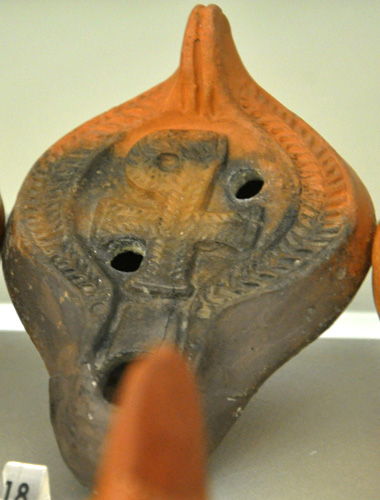
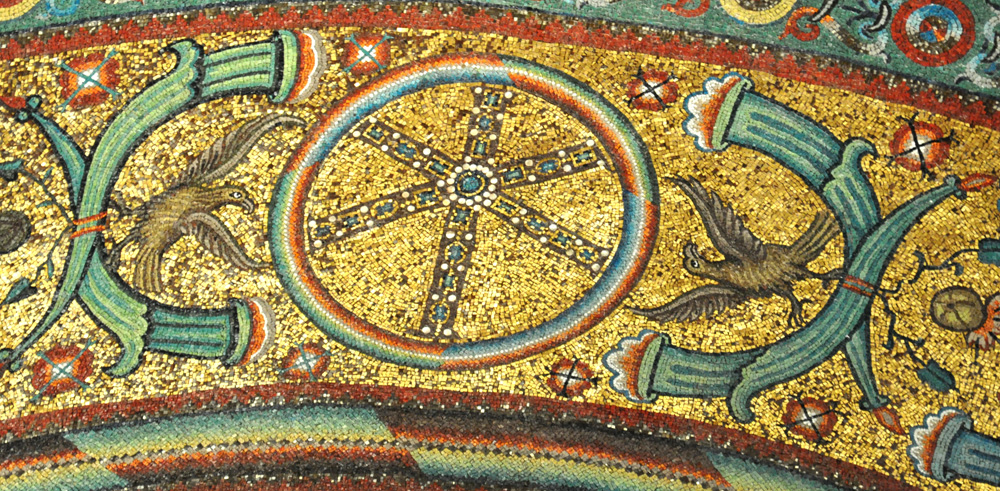
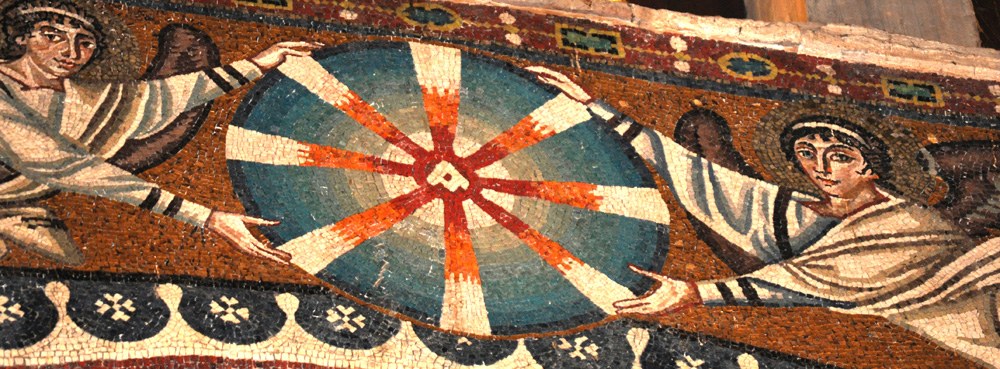
Prepared in 2016 by Richard Stracke, Emeritus Professor of English, Augusta University. Revised 2016-12-07, 2019-11-19.
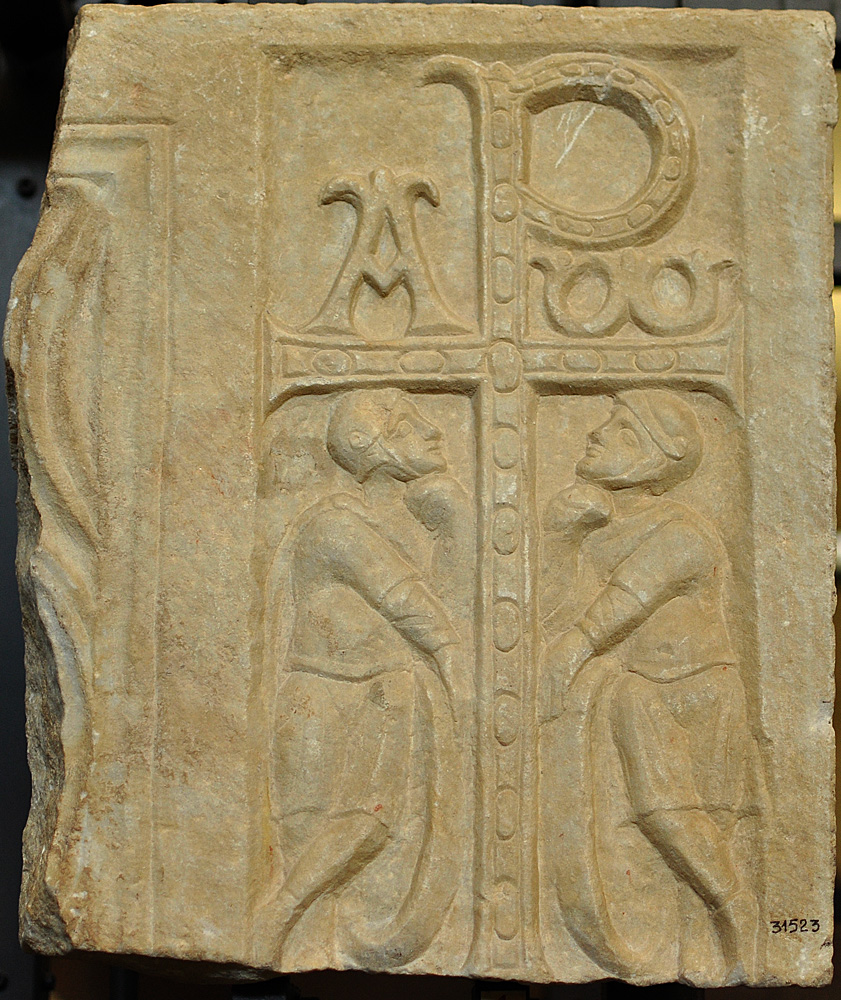
Paleo-Christian sarcophagus in Rome (See description page)
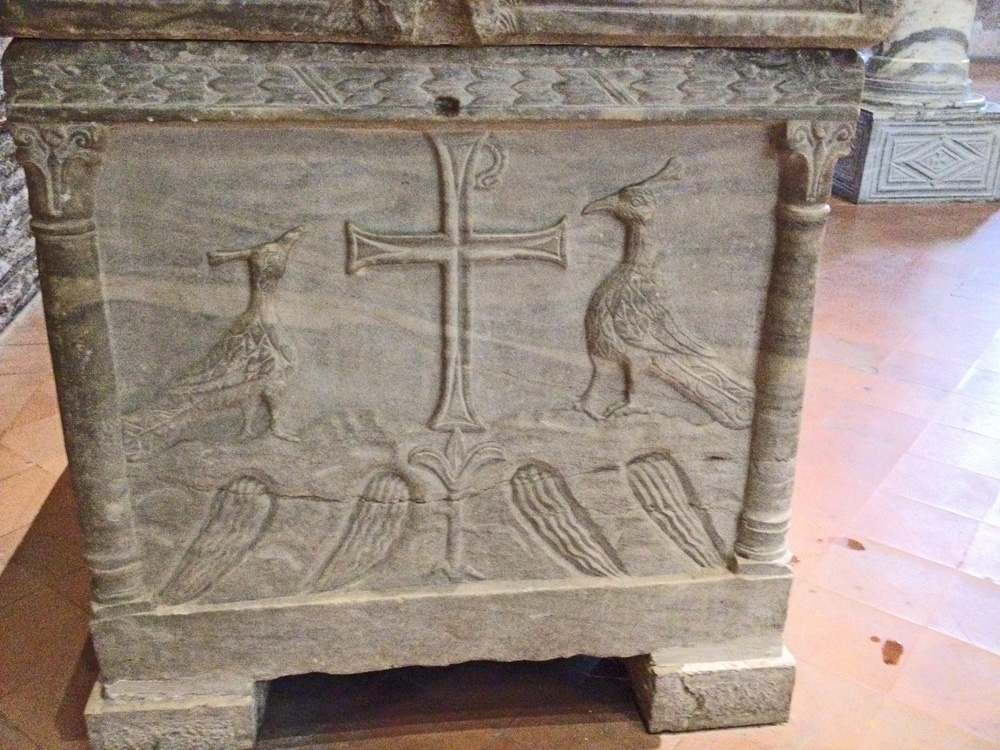
End panel on a 6th-century sarcophagus in Ravenna (See description page)
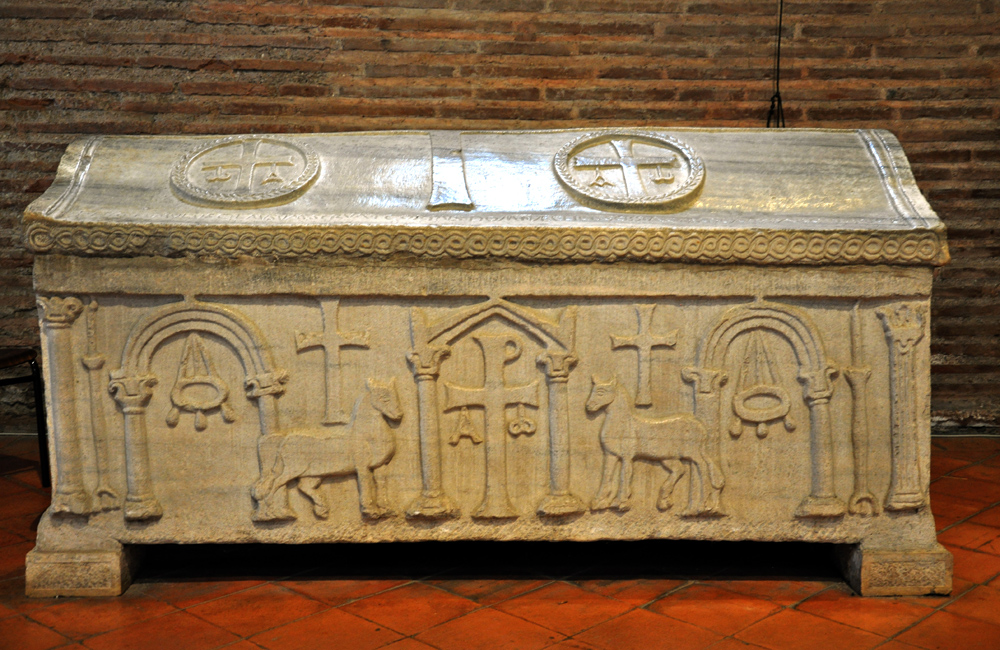
The sarcophagus of St. Felix of Ravenna, 8th century (See description page)
MORE EXAMPLES
- 5th to 8th century: This sarcophagus has two staurograms with pendant alpha and omega flanking a temple housing a cross.
ALSO SEE